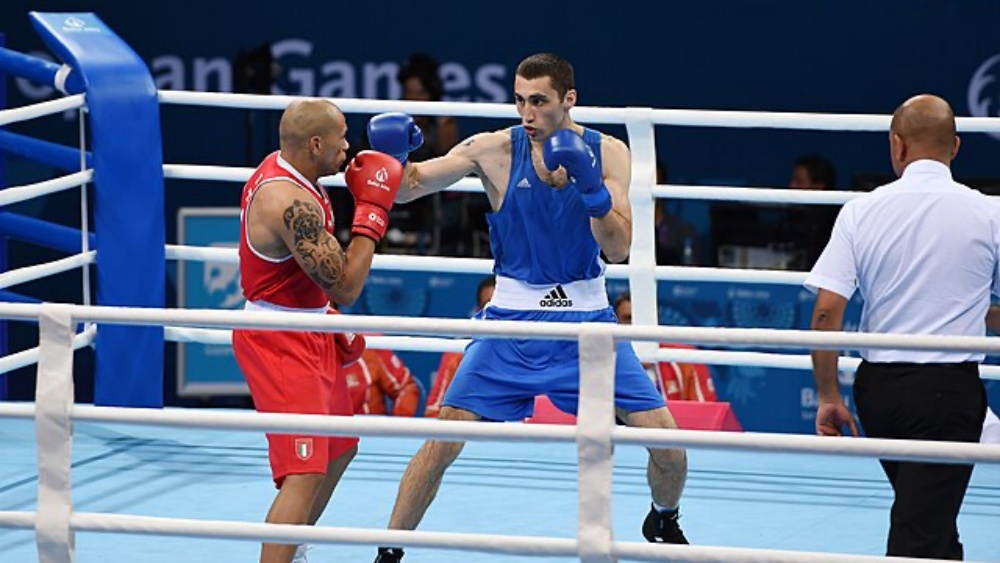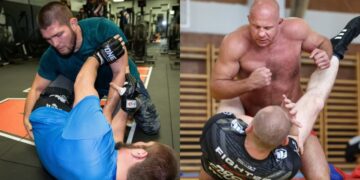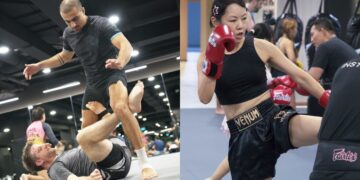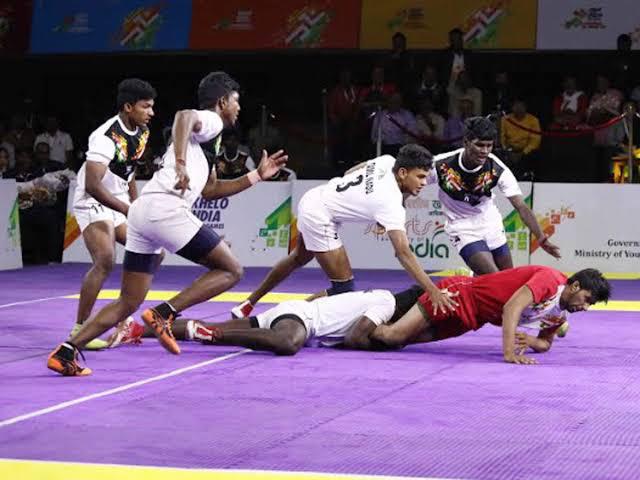Ask any coach or seasoned fighter, and they’ll tell you the same thing: your punches are only as effective as your footwork. Most people think boxing is all about fast jabs and powerful knockouts. While those are exciting, they only work well if your feet are in the right place. Footwork is what allows you to move in, strike, and get out without getting hit.
Whether you’re a beginner learning the basics or a more experienced fighter looking to sharpen your movements, adding footwork drills to your training can make a huge difference. In this article, we’ll talk about why footwork is so important and go over several drills that can help you move better, feel more balanced, and become a smarter boxer.
Footwork And The Striking Arts

In boxing, footwork is essential for setting up punches, creating angles, and placing yourself in the optimal position while staying out of your opponent’s range.
Footwork isn’t something unique to boxing. You’ll see it in almost every striking art. In Muay Thai, fighters use angles to land kicks and elbows. In kickboxing, it’s key to create space or close the distance. Even in traditional martial arts like taekwondo and karate, movement plays a huge role in offense and defense.
In boxing, footwork is essential. Since your hands are your main weapons, your ability to position yourself correctly with your feet becomes even more important. Good footwork helps you manage range, escape danger, and find openings to land clean shots.
Footwork In Boxing
In boxing, footwork is about more than just moving around the ring. It’s how you control the distance, stay balanced, and keep yourself in a position to either attack or defend. Fighters like Muhammad Ali, Sugar Ray Leonard, Floyd Mayweather, and Vasyl Lomachenko are known not just for their skills with their hands, but also for their footwork. They knew how to glide around their opponents, create angles, and stay a step ahead.
Good footwork allows you to enter and exit safely, cut off the ring, or reposition yourself quickly when you’re under pressure. It also helps you stay efficient, conserving energy and avoiding the wild, off-balance movements that can leave you open to counters.
Why Footwork Matters
So why is footwork such a big deal? First, it helps you maintain balance and stability, which is crucial whether you’re throwing punches or defending. If your base is off, your punches lose power, and your defense gets sloppy.
Second, it helps you control the pace of the fight. When you know how to move, you can force your opponent to follow you, or you can corner them and make them uncomfortable.
Lastly, footwork creates openings. Moving side to side or pivoting can give you better angles to land shots. It also lets you avoid getting hit by simply not being in the line of fire. Good footwork means you’re not just reacting—you’re dictating the action!
5 Drills To Improve Your Footwork In Boxing
Now that you understand the importance of footwork, let’s dive into five drills that sharpen key movement patterns you’ll use constantly in boxing, like stepping in, switching stances, and exiting quickly. You can use an agility ladder for these, or simply mark lines on the ground with tape or chalk.
1) Stepping In And Out Drill
Start in your stance and move forward into each square or marked space one step at a time, and out of the square. Lead with your front foot and let the back foot follow, always keeping your stance intact.
This drill helps you close the distance smoothly without breaking form. It teaches you to move with control instead of lunging or overreaching.
2) Switching Stance To Stepping In
From your stance, switch to the opposite stance, then step forward into the next square. Focus on clean transitions and keeping your guard up throughout the movement.
This drill builds coordination and balance while teaching you how to change stance and move forward without losing rhythm. It’s useful for breaking patterns and setting up unexpected attacks.
3) Switching Stance While Bouncing
Lightly bounce in place and switch your stance mid-bounce, landing with control. Use the ladder or ground markings to keep your movement centered.
This drill improves rhythm, timing, and flow. It’s especially helpful if you like to stay light on your feet and want to move smoothly between stances during a fight.
4) Quick Switch Stance Drill
Move quickly from one space to the next while switching your stance with every step. Keep the transitions tight and stay balanced throughout.
This one sharpens your reaction time and foot speed. It helps you develop explosive movements that you can use for feints, bursts of pressure, or sudden shifts in angle.
5) Stepping In To Shuffle Out
Step into the space in front of you, throw an imaginary combo, then shuffle back to your starting position. Focus on fast, clean entries and exits.
This drill mimics engaging and resetting in a fight. It trains you to get in, strike, and get out before your opponent can counter. It’s a simple drill that builds discipline and defensive awareness.
Integration
Doing these drills on their own is helpful, but the real progress comes when you start integrating them into your overall training. Try combining footwork drills with focus mitt or heavy bag work. For example, after throwing a combo on the mitts, immediately pivot or angle out. After finishing a combo on the heavy bag, reset with movement rather than standing still.
Footwork should be automatic. The more you pair it with actual boxing techniques, the more natural it becomes during sparring or competition.
Drilling And Practice
Footwork doesn’t need to be fancy to be effective. The key is consistency. You can incorporate a few of these drills into your warm-up or dedicate a few minutes of each session to focused movement training. Do them slowly and controlled at first, then increase speed once your form is solid. Over time, you’ll find yourself moving more smoothly and confidently.
Mix things up as well. Train with music, set a timer, or even turn it into a game with a training partner. The more fun and engaging the practice, the more likely you’ll stick with it.
Conclusion
Boxing isn’t just about throwing punches, it’s about setting them up with smart movement. Footwork is what gets you in range, keeps you safe, and gives your strikes purpose. The drills in this article are simple yet effective—they sharpen your movement, improve your balance, and elevate your overall boxing skills.
Like anything in boxing, footwork takes time and reps. But once you build that foundation, your defense, offense, and even ring control will start to fall into place. So start practicing, and take your game to the next level.
You may also like:
How To Walk Down Opponents: Pressure Fighting 101
Your environment significantly influences what works and what doesn’t in boxing. Even something that might seem insignificant to casual boxing fans, like the size of a boxing ring, influences which tactics work best. Smaller rings…
If you’ve ever watched a fight and thought, “Wow, this guy never backs off?” You’ve witnessed pressure fighting in action. Pressure fighting in martial arts is the art of making your opponent miserable with constant…
Hard sparring sessions in martial arts can make you feel like you’ve just walked through a brick wall. You’ve given it your all, and your muscles are sending you a strongly worded memo saying that…
Nothing feels as rewarding as landing a well-executed strike that finishes the match or secures a win. The knockout is the crème de la crème of combat sports like mixed martial arts (MMA), Muay Thai,…
Boxing is often referred to as “the sweet science” because it is more than just throwing punches. Boxing is about precision, timing, and strategy to scientifically defeat the opponent. While fundamental techniques are the core…
The lead hook can be a double-edged sword. Land perfectly, and your opponent’s night might be over. Throw it half-heartedly and you might fight yourself eating a hard right that puts you to sleep. The…
Every year, athletes embark on their Brazilian Jiu-Jitsu journey filled with hope to make their dreams come true and make history. With a month coming before the World IBJJF Jiu-Jitsu Championship 2025, grappling fans can’t…
Whether you’re hitting the heavy bags in Muay Thai, rolling hard in Brazilian Jiu-Jitsu (BJJ), sharpening your jab-cross combos in boxing or just hitting the gym for a quick workout, one thing’s for sure: your…
Gravity isn’t your friend when you’re defending against takedowns. It’s working alongside your opponent to get you on the ground. Fortunately, you also have an ally: the cage. The cages used in modern MMA are…
The back mount is the most dominant position in BJJ. It allows you to set up your attacks without your opponent peripherally seeing how you set them up. Because of this, opponents will rely on…
The countless chokes you learn in Brazilian Jiu-Jitsu are a massive part of what makes it such a fun martial art. While most BJJ techniques were developed to be performed on opponents wearing Gis, many…
Martial arts legends can inspire children—or anyone else—to dedicate themselves to learning more about these ancient arts. Children typically have short attention spans, but they’ll sit through exciting stories about warriors battling tigers with bare…




































